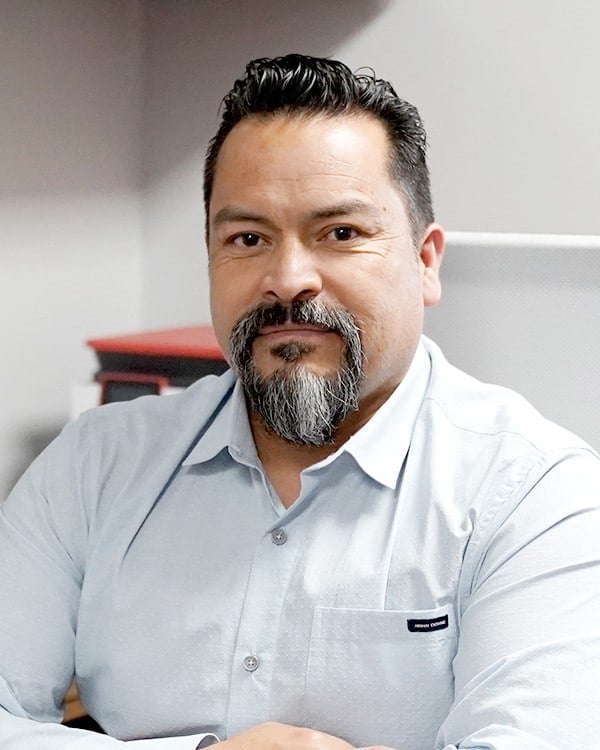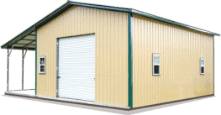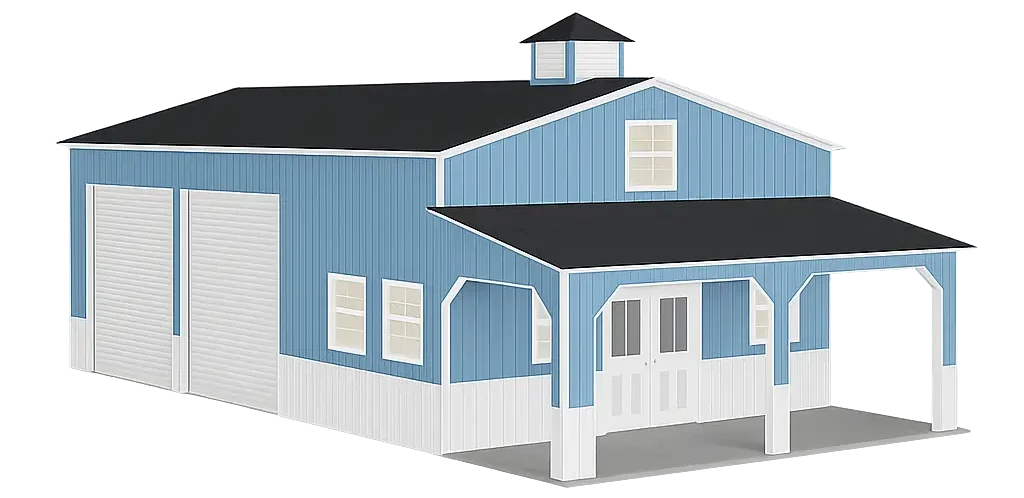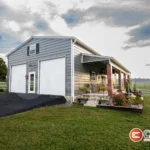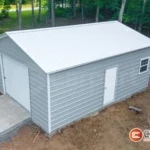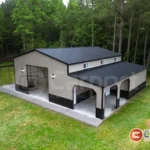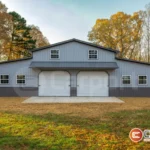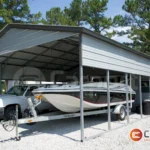25
Why Cold-Formed Steel Is Quite Possibly the Perfect Building Material
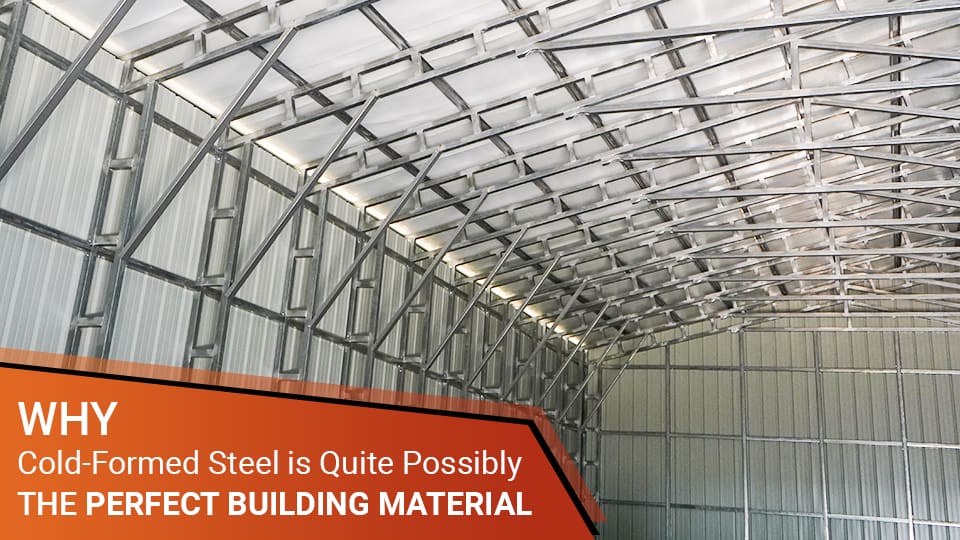
As far as many residential and commercial building projects go, wood is still the gold standard of building material, right? Wrong! Cold-formed steel is stronger and more durable, while also being more flexible. When you get right down it, there’s really a lot to like about cold-formed steel for numerous framing, roof, and wall paneling applications.
Codes & standards development for cold-formed steel
Cold-formed steel usage as a building material can be traced back as far as the mid-1800s in both the U.S. and Great Britain. However, in the early days, there was no standard design methodology for cold-formed steel, and it wasn’t widely recognized as a building material product. The American Iron and Steel Institute (AISI) helped to change all of that in 1938 by convening a technical committee charged with the task of developing some benchmark specifications for cold-formed steel structural design. AISI has continued to help pave the way for steel applications ever since, and continued advances in engineering technology have really brought cold-formed steel to the forefront in recent decades.
How cold-formed steel works?
Cold-formed steel comes from a process where galvanized sheet steel is roll-formed into various building components, including everything from studs, to joists, to headers, to trusses, to various kinds of sheet paneling. It’s known as “cold-formed” because these steel sheets can be formed and shaped at ambient temperatures by roll-forming machines. They can also be produced in large quantities in a quick manner while maintaining a high standard of quality and precision.
You’ve no doubt seen metal carports, garages, and barns fabricated from cold-formed (also known as light-gauge) steel, but that’s just the tip of the iceberg. There are now light-gauge steel building applications for a wide variety of residential, agricultural, commercial, and industrial uses, with more being designed and built all the time.
Some leading organizations which support, improve, & promote light-gauge steel products
The American Iron and Steel Institute continues to be a pivotal driver in the light-gauge steel market, but they’re far from alone. Several other notable organizations have also come alongside to help improve & promote cold-formed steel products, provide various services to users, and help to expand the product lines of leading manufacturers. Here are just a few:
- Metal Building Manufacturers Association (MBMA) – Founded by metal building manufacturers and suppliers in 1956, the MBMA membership now represents 95% of all metal building systems being produced in the United States.
- Metal Construction Association (MCA) – The MCA was formed in 1983 by parties engaged in the manufacture, sale, and installation of metal products. Its mission is to help expand the usage of metal in construction through innovation, education, and marketing efforts.
- Steel Framing Alliance (SFA) – Initially founded as the North American Steel Framing Alliance, the SFA was established in 1998 to encourage more widespread use of cold-formed steel framing in residential applications. They’ve since expanded their scope to include commercial and industrial applications, as well.
- Metal Roofing Alliance (MRA) – A well-designed, well-installed metal roof offers outstanding performance, longevity, aesthetics, and value in comparison to other available roofing materials. The MRA is a coalition of metal roofing manufacturers, paint suppliers & coaters, dealers, roofing contractors, and metal industry associations that exists to help promote metal roofing products to both consumers and installers.
- Light-Gauge Steel Engineers Association (LGSEA) – The LGSEA exists to help equip design engineers, manufacturers, builders, and contractors in their cold-formed steel construction efforts. They offer educational seminars and also produce technical notes to assist light-gauge steel design engineers.
What makes cold-formed steel a practically perfect building material?
What makes cold-formed steel so attractive as a building material? The list of benefits is longer than this blog can address with justice, but here are just a few features and advantages that are worth noting:
- Lightweight – Cold-formed steel components weigh between 35% and 50% less than their wood counterparts on average. This means that light-gauge steel components are easier to transport, and they’re also much easier to handle and navigate on the construction site.
- Strong and rigid – Thanks in part to the way it’s produced, cold-formed steel possesses one of the highest strength-to-weight ratios of any commercially-available building material. This means that cold-formed steel offers better design flexibility, better material usage, and more usable interior clear-span space for building applications.
- Simpler installation process – Building components made from cold-formed steel can be fabricated with high accuracy in a dedicated manufacturing facility ahead of time. These components are then delivered to the building site ready to assemble. With no time required for onsite measuring or cutting – and less opportunity for related foul-ups – construction quality is improved, and steel buildings also go up much faster.
- Dimensionally stable – Cold-formed steel doesn’t expand or contract due to moisture, and it also won’t split or warp over time. Steel is thus a dimensionally-stable material; that’s something which can’t be said for wood or gypsum wallboard! No more cracks, nailhead popping issues, or other similar problems that used to be seen as commonplace on the construction site!
- No needed formwork – No more creating formwork when pouring a concrete floor; the use of cold-formed steel decks eliminates that need. An on top of that, the composite action between the steel deck and concrete actually increases overall floor strength and rigidity.
- Durable and pest-resistant – Cold-formed steel is essentially rot-proof, termite-proof, and pest-proof. And cold-formed steel products which are properly galvanized also deliver excellent, long-term corrosion resistance.
- Non-combustible – While non-combustible doesn’t equate to fire-proof, the fact that steel doesn’t burn means that it also doesn’t contribute any fuel to the spread of a fire. And steel is definitely more fire-resistant than wood or other combustible materials, meaning that a steel structure can often save you money on property insurance premiums.
- Recyclable – Care about doing your part to help reduce your ecological footprint? There’s a lot to like about steel in that regard, too. Steel is the most recycled construction material in North America, and steel building components also include a minimum of 25% recycled content. Steel is a material with essentially limitless recyclability, with no degradation in structural properties. Choosing steel as a construction material also has a measurable impact on reducing the demand for tree-based products, helping to conserve one of Earth’s most precious resources.
Carport Central is your best source for cold-formed steel structures!
If you’re interested in learning more about the many benefits of cold-formed steel for framing and construction needs, visit our friends over at BuildSteel. Would you like to gain more knowledge about why pre-engineered steel builds are better than comparable conventional construction options? Check out this helpful blog.
And if you’re ready to get your own custom steel building installed for residential, commercial, or agricultural purposes, Carport Central has you covered! Sure, we do metal carports, but we also provide everything from garages, to metal barns, to storage sheds, to utility buildings, to retail storefronts, to workshops, warehouses, manufacturing centers, and even buildings that are suitable for finishing as residential space. You can even create your own personalized building design with our cutting-edge, easy-to-use 3D Building Design Tool on any computer, phone, or smart device with internet access.
Rather talk to a real, live, knowledgeable human? We’ve got plenty of those on our team too, and they’re willing and able to listen and help you with your building needs, whether big or small. Just give us a call at (980) 321-9898, and give us a chance to show you the Carport Central difference!
Get Started
It's fast and easy. Get your instant quote today!
BLOG TOPICS
- Certified Carports (2)
- COVID-19 (1)
- Prefab Metal Buildings (66)
- Metal Building Homes (6)
- Metal Building of the Week (11)
- Install of the week (1)
- Metal Building Extensions (1)
- Install of the month (2)
- Garages (52)
- Farm Show (1)
- Building Components (1)
- Carports (29)
- Storage Sheds (15)
- Metal Buildings (6)
- Barns (18)
- Metal Homes (8)
- Metal Sheds (1)
- RV Covers (6)
- 12 Gauge Framing (7)
- Workshops (7)
- Eagles & Buildings (1)
- Reviews (2)
- Snowfall in the Southeast (2)
- Carports and Buildings Prices (1)
- Reality Of Discounted Buildings (2)
- Snow Removal (1)
- Offers (3)
- Condensation in Metal Buildings (2)
- News & Awards (12)
- Livestock sheds (4)
- Installations (15)
- Metal Buildings Applications (7)
- Customized Buildings (41)
- Carport Sizes (2)
- Facts (1)
Metal Buildings
- Alabama
- Arizona
- Arkansas
- California
- Colorado
- Connecticut
- Delaware
- Florida
- Georgia
- Idaho
- Illinois
- Indiana
- Iowa
- Kansas
- Louisiana
- Maine
- Maryland
- Massachusetts
- Michigan
- Minnesota
- Mississippi
- Missouri
- Montana
- Nebraska
- Nevada
- New Hampshire
- New Jersey
- New Mexico
- New York
- North Carolina
- North Dakota
- Ohio
- Oklahoma
- Oregon
- Pennsylvania
- Rhode Island
- South Carolina
- South Dakota
- Tennessee
- Texas
- Utah
- Vermont
- Virginia
- Washington
- West Virginia
- Wisconsin
- Wyoming
Metal Garages
- Alabama
- Arizona
- Arkansas
- California
- Colorado
- Connecticut
- Delaware
- Florida
- Georgia
- Idaho
- Illinois
- Indiana
- Iowa
- Kansas
- Louisiana
- Maine
- Maryland
- Massachusetts
- Michigan
- Minnesota
- Mississippi
- Missouri
- Montana
- Nebraska
- Nevada
- New Hampshire
- New Jersey
- New Mexico
- New York
- North Carolina
- North Dakota
- Ohio
- Oklahoma
- Oregon
- Pennsylvania
- Rhode Island
- South Carolina
- South Dakota
- Tennessee
- Texas
- Utah
- Vermont
- Virginia
- Washington
- West Virginia
- Wisconsin
- Wyoming
Metal Carports
- Alabama
- Arizona
- Arkansas
- California
- Colorado
- Connecticut
- Delaware
- Florida
- Georgia
- Idaho
- Illinois
- Indiana
- Iowa
- Kansas
- Louisiana
- Maine
- Maryland
- Massachusetts
- Michigan
- Minnesota
- Mississippi
- Missouri
- Montana
- Nebraska
- Nevada
- New Hampshire
- New Jersey
- New Mexico
- New York
- North Carolina
- North Dakota
- Ohio
- Oklahoma
- Oregon
- Pennsylvania
- Rhode Island
- South Carolina
- South Dakota
- Tennessee
- Texas
- Utah
- Vermont
- Virginia
- Washington
- West Virginia
- Wisconsin
- Wyoming
- 100x100 Metal Building
- 12x12 Metal Shed
- 12x20 Carport
- 12x24 Carport
- 12x30 Carport
- 16x20 Carport
- 18x20 Carport
- 20x20 Carport
- 20x20 Metal Building
- 20x30 Carport
- 20x30 Metal Building
- 20x40 Carport
- 20x40 Metal Building
- 24x24 Carport
- 24x24 Garage
- 24x30 Carport
- 24x30 Metal Building
- 24x30 Metal Garage
- 24x36 Metal Building
- 26x30 Metal Building
- 30x30 Carport
- 30x30 Garage
- 30x30 Metal Building
- 30x40 Carport
- 30x40 Garage
- 30x40 Metal Building
- 30x40 Storage Building
- 30x50 Metal Building
- 30x60 Metal Building
- 40x100 Metal Building
- 40x40 Metal Building
- 40x60 Metal Building
- 40x80 Metal Building
- 50x100 Metal Building
- 50x50 Metal Building
- 50x80 Metal Building
- 60x100 Metal Building
- 60x120 Steel Building
- 60x60 Metal Building
- 60x80 Metal Building
- 80x100 Metal Building
- All Steel Carports
- American Building Network
- American Custom Carports
- American Steel Carports
- Arkansas Carports
- Best Choice Metal Structures
- California All Steel
- Carports Outlet
- Central Texas Metal Buildings
- Coast To Coast Carports
- Custom Steel Structures
- Dreams Carports and Buildings Inc
- East Coast Carports
- Enterprise Steel Structures
- Infinity Carports
- Interstate Steel Structures
- Long Horn Buildings
- Midwest Steel Carports
- NC Structures
- New Team Carports
- Northside Metal Carports
- Quality Carports
- Rhino Carports
- Safeguard Metal Buildings
- Southern Steel Buildings Inc.
- Steel Buildings and Structures
- Tennessee Steel Buildings
- Tubular Building Systems
- Ultimate Metal Buildings
- United Structures
- USA Carports
